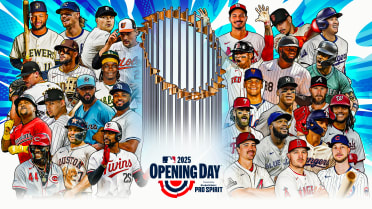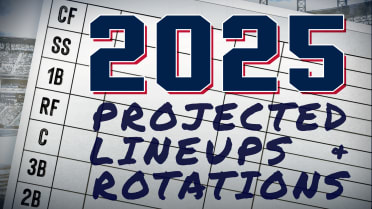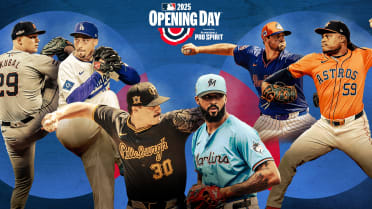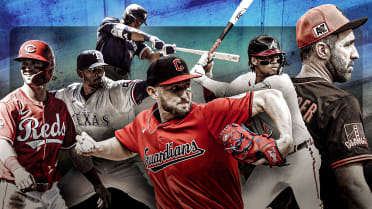Sunday marks the 24th anniversary of the night Cardinals third baseman Fernando Tatis pummeled two grand slams in the same inning at Dodger Stadium, and even more astonishingly, did so off the same pitcher (Chan Ho Park). Nobody had hit two slams in the same inning before in a Major League game, nobody has done it since and it’s quite possible (perhaps probable) that nobody will do it again.
“What would it be comparable to?” legendary Dodgers announcer Vin Scully told the St. Louis Post-Dispatch afterward. “I don’t know how you could compare it to anything. One inning is so preposterous.”
Tatis might already be best known as the father of Fernando Tatis Jr., who was less than 4 months old at the time and who, amazingly, authored his own multihomer game at Dodger Stadium on April 23, 2021.
But it’s likely that no matter the accomplishments of the son, the father will always have his place in the record books. With more than two decades gone by since Tatis’ double dose of slam, here is a look back at his jaw-dropping achievement, what makes it so special, and why it ultimately may continue to stand alone.
How it happened
The date was April 23, 1999, and 46,687 fans packed Dodger Stadium on a cool Friday night.
St. Louis had acquired Tatis not long before, from Texas at the 1998 Trade Deadline. He had hit well down the stretch and then opened '99 on a tear, arriving at Dodger Stadium for the series opener carrying a .250/.390/.542 line with four home runs and 11 RBIs. The 24-year-old hit cleanup, right behind Mark McGwire.
The pitcher opposing the Cardinals that night was hardly a pushover. Park, a right-hander, had come over from South Korea and established himself as a key part of the L.A. rotation. In 1998, he posted a solid 3.71 ERA, and his rate of 0.65 homers allowed per nine innings was 10th lowest of 96 qualified MLB pitchers.
Through two innings, there was nothing out of the ordinary, and the Dodgers held a 2-0 lead. That’s when the floodgates opened.
Two singles and a hit batter loaded the bases with no outs for Tatis, who crushed a no-doubt slam to the back of the left-field bullpen, prompting announcer Joe Buck to describe it as having “McGwire distance.”
A lot had to happen for Tatis to get another chance. And well, a lot happened.
One out later, Eli Marrero homered. After consecutive walks, Cardinals pitcher José Jiménez tried to sacrifice bunt, but Park wasn't able to get the force at third, loading the bases. Darren Bragg then hit a ground ball to first baseman Eric Karros, whose throw home was ruled to have pulled catcher Todd Hundley off the bag for an error. Edgar Rentería's ensuing RBI single brought home one run, and McGwire flied out, with third-base coach Rene Lachemann holding the pitcher Jiménez at third on both plays. That series of events set the stage for Tatis to come back up with the bases full, and St. Louis leading 7-2.
Park already had thrown 81 pitches, including 42 in the inning. Yet nobody on the Dodgers' staff came to get him. (Manager Davey Johnson was ejected after disputing the call at home three batters earlier.)
Tatis worked the count full. Park, no doubt running on fumes at that point, hung a breaking ball on his 87th and final pitch. Tatis smacked it into the seats beyond left-center field
“I don’t think it’s ever going to happen again,” Park told The Athletic in 2018.
Park enjoyed a history-making, trailblazing career in his own right, pitching nearly 2,000 big league innings over 17 seasons, which included an All-Star selection and 124 victories. But on this night, his final line read: 2 2/3 innings, eight hits, 11 runs (six earned), three walks, two strikeouts and three home runs. Only 23 starters since have had a game with at least 11 runs in fewer than three innings.
How unlikely is a repeat?
Hitting two slams in a single inning is a difficult task. That much is obvious. But a deep dive into the numbers shows just the sort of far-fetched feat this is.
“You’ve got a better chance of winning the lottery,” McGwire told the Post-Dispatch, in a hyperbolic statement that might not be as far from the truth as it sounds.
According to Baseball-Reference, there have been more than 4 million innings pitched in Major League history. And in only one of those has the same player hit two slams. But even that may undersell the difficulty.
A few years back, MLB.com senior data architect Tom Tango dug into the numbers, which show the following:
• Take a typical power-hitting cleanup batter, who hits 30 home runs in a full season (600 plate appearances).
• That cleanup batter gets to the plate in the first inning 62% of the time, and 1.7% of those plate appearances come with the bases loaded. Just 5% of those chances result in a homer.
• Now comes the hard part. Even once the first slam is done, our hitter stands just a 1.5% chance of getting up to the plate again that inning. In this scenario, 21% of plate appearances would have the bases loaded, but once again, the home run occurs 5% of the time.
The end result: mind-boggling odds of 12 million to one for this particular scenario to come to fruition.
How has this played out in real life? MLB.com data guru Jason Bernard dug up 127 instances throughout AL/NL history (between 1916-2022) in which a hitter got multiple bases-loaded plate appearances in the same inning. (This includes some in which multiple players for the same team did it in the same frame.)
In the time since Tatis' big night, there have been 34 such situations out of nearly 1 million half-innings. The most recent came on Sept. 5, 2021, at Arizona, where Seattle's Kyle Seager -- with the help of an automatic runner in the 11th inning -- notched a two-run double and a groundout in a pair of bases-full opportunities during a seven-run outburst.
Out of this select group of half-innings spread across 20-plus seasons, there have been only two in which the player launched a grand slam in the first plate appearance, giving him a chance to match Tatis. In fact, this scenario has occurred just nine times on record, Tatis included. Amazingly, the same player (Carl Furillo) did it twice, against the same team, three years apart. (There also are two examples of players launching a slam in the second of two bases-loaded chances during an inning).
Players to hit a slam, come up with bases loaded later in the inning
• Raúl Ibañez (Mariners): Aug. 4, 2008 (7th) vs. Twins (single)
• Bobby Abreu (Phillies): July 24, 2003 (6th) at Cubs (sac fly)
• Fernando Tatis (Cardinals): April 23, 1999 (3rd) at Dodgers (grand slam)
• Rick Reichardt (Angels): Aug. 23, 1967 (4th) at Indians (flyout)
• Bill White (Cardinals): May 9, 1963 (5th) vs. Dodgers (strikeout)
• Carl Furillo (Dodgers): May 14, 1955 (7th) at Reds (flyout)
• Carl Furillo (Dodgers): June 8, 1952 (8th) at Reds (strikeout)
• Joe Astroth (A’s): Sept. 23, 1950 (6th) at Senators (single)
• Nick Etten (Yankees): May 2, 1946 (4th) vs. Indians (double play)
Such a combination of events is a needle in the baseball haystack. But as extremely unlikely as it is, it’s perhaps possible to imagine how such a feat could be repeated.
What's even more unfathomable is the same starting pitcher giving up two slams to the same batter in the same inning.
Of the nine examples in the list above, Tatis was the only one to face the same opponent in both plate appearances, and there's good reason for that. In order for a pitcher to start an inning and then allow multiple grand slams to the same player, he must face a minimum of 13 batters.
That's the sort of thing that almost never happens in today's game. A close watch is kept on things such as pitch counts, innings totals and times through the order -- both in an effort to protect arms, and to maximize pitchers' productivity. Rosters are bigger, too.
Going back to 2010, there have only been 33 times when a pitcher has faced 12 batters in the same inning. In just eight of those did the pitcher survive to face a 13th hitter, although the most recent instance just occurred on April 16, when the Reds' Luis Cessa faced 13 Phillies in the first inning, giving up a few bases-loaded hits but no grand slams.
Even in a blowout, it's difficult to imagine another pitcher being left in, with the bases loaded, to face that 13th hitter -- someone who already hit a grand slam in the inning. That's why Park's record appears even more untouchable than Tatis'.
Twenty-four years ago, those two players combined for a baseball first. It remains a unique piece of the game's history.
Andrew Simon is an editor and writer for MLB.com.




